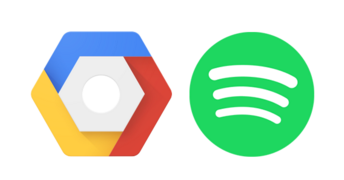
Spotify has announced it is working with the Google Cloud Platform team to provide platform infrastructure for Spotify everywhere.
In the past, Spotify has taken a traditional approach by buying or leasing data center space, server hardware and networking gear close to its customers. This has allowed it to deliver music instantly, wherever the customers may be in the world, said the company.
In order to keep up with demand, the company decided that operating its own data centers was not effective, and that storage, compute and network services available from cloud providers are as inexpensive and effective as what the traditional approach provides, said the company. The company also said that its experience with Google has been efficient. Building on Google’s data infrastructure provides Spotify with the advantage of moving its back end to the cloud.
Java 9 addresses GTK 3 GUI toolkit on Linux challenges
Java 9 is looking to enable Java graphical applications, whether it is based on AWT, JavaFX or Swing, to use either GTK 2 or GTK 3 on Linux. This would bring Java up to the latest version of the toolkit and prevent application failures.
The reason for the move is because Java on Linux currently uses GTK 2, which raises several issues. There are Java packages that use GTK, including AWT/Swing, JavaFX and SWT. SWT has migrated to GTK 3, though there is a system property that can be used to force it to use the older version, according to David Hill, a contributor to OpenJDK. This mixing of packages using different GTK versions is what causes application failures. This issue can be seen with Eclipse, which is SWT-based, while JavaFX can coexist with either Swing or SWT.
Some of the risks with the proposed solution include new bugs being introduced that will not be caught by testing. AWT uses more features so it may be at higher risk of adding new bugs due to GTK behavioral changes. The pros of this migrate is that there will be less overall effort in porting and testing to migrate the existing code to compile with and use GTK 3, according to OpenJDK. This migration will also allow one testing path instead of two, and only one code path.
Twitter introduces the Fabric mobile app
Twitter is releasing a new mobile app for developers. The Fabric mobile app for Android and iOS aims to give developers an at-a-glance look at the most important metrics in order to keep track of their apps’ health and stability in real time.
“Since we launched Fabric in 2014, our mission has been to make tools that let you focus on building the best apps,” wrote Meekal Bajaj, product manager at Twitter, in a blog post. “Crashlytics and Answers have made it easy to see your app’s stability, but crashes don’t always happen when you are at your desk. And when time is of the essence, having the right context at your fingertips can make all the difference.”
IBM announces new Watson APIs
IBM is giving developers new cognitive APIs that enhance Watson’s emotional and visual senses, and aim to extend the capabilities of cognitive technologies and tools. The new APIs are designed to push the boundaries of how humans and machines interact, and to improve developers’ ability to embed these technologies in solutions that can think, perceive and empathize.
“We continue to advance the capabilities we offer developers on IBM’s Watson platform to help this community create dynamic AI-infused apps and services,” said David Kenny, general manager of IBM Watson. “We are also simplifying the platform, making it easier to build, teach and deploy the technology. Together, these efforts will enable Watson to be applied in many more ways to address societal challenges.”
The APIs include Tone Analyzer, Emotion Analysis and Visual Recognition. In addition, IBM is adding new tooling capabilities and enhancing its SDKs across its Watson portfolio.
LogiGear offers new plan for mobile app testing
LogiGear, a software testing solutions company, announced the introduction of Mobile Appsurance testing packages. These plans provide businesses and mobile developers a way to verify that their applications are compatible with the most popular mobile devices used by their customers.
The prepackaged manual testing plans provide a way to ensure that the apps work on devices, and the new service also solves the problem of finding the right mix of devices and test types based on thousands of prior use cases and tests.
“Normally, mobile testing requires the client to provide the test parameters,” stated Hung Nguyen, CEO of LogiGear, “That’s great when you know what the parameters should be, but not everyone does.”
The approach streamlines the process for the client and makes it possible to do the testing. Additionally, LogiGear provides customized mobile testing solutions using either shared or dedicated device-management options for companies that need to test complex applications.





